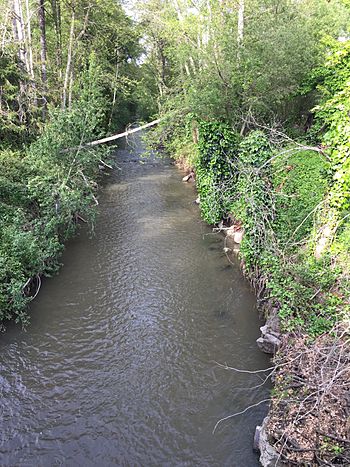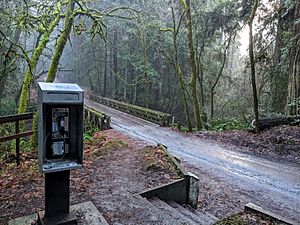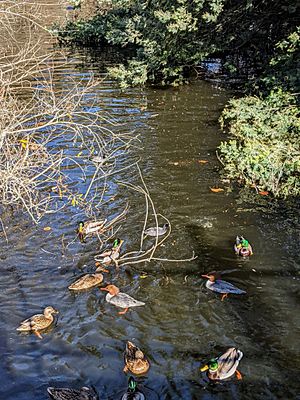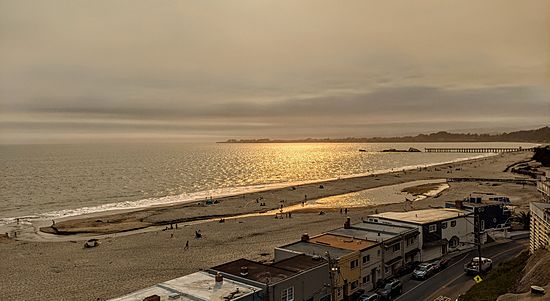Aptos Creek facts for kids
Quick facts for kids Aptos Creek |
|
|---|---|

Aptos Creek at Spreckels Boulevard bridge in April, 2017
|
|
| Other name(s) | Arroyo de Outos |
| Country | United States |
| State | California |
| Region | Santa Cruz County |
| City | Aptos |
| Physical characteristics | |
| Main source | Southwest flank of Santa Rosalia Mountain 2,502 ft (763 m) 37°04′19″N 121°51′26″W / 37.07194°N 121.85722°W |
| River mouth | Monterey Bay 7 ft (2.1 m) 36°58′11″N 121°54′22″W / 36.96972°N 121.90611°W |
| Basin features | |
| Tributaries |
|
Aptos Creek is a southward flowing 9.5 miles (15.3 km) creek that begins on Santa Rosalia Mountain on the southwestern slope of the Santa Cruz Mountains in Santa Cruz County, California and enters Monterey Bay, at Seacliff State Beach in Aptos, California.
History
The earliest record of "Outos" or "Aptos" is Arroyo de Outos in 1796, thought to be pronunciations of an Ohlone (Sp. Costanoan) village at the junction of Aptos and Valencia Creeks. Rancho de Aptos was a sheep ranch of Mission Santa Cruz shown on documents dating to July 5, 1807. Rancho Aptos was a 6,686-acre (27.06 km2) Mexican land grant in present-day Santa Cruz County, California, given in 1833 by Governor José Figueroa to Rafael Castro.
Watershed and course
The Aptos Creek watershed drains 24.5 square miles (63 km2) beginning on the southwestern slope of 2,585 feet (788 m) tall Santa Rosalia Mountain in the western Santa Cruz Mountains. Over 60% of the watershed of the Aptos Creek mainstem lies within and is protected by The Forest of Nisene Marks State Park. The major tributaries are (from top to bottom) Bridge Creek, Mangels Gulch, and then Valencia Creek (shortly after the latter receives its Trout Gulch tributary).
Ecology

The middle and upper watershed is in a second growth redwood (Sequoia sempervirens) forest that was clearcut over a forty-year period from 1883 to 1923. Coho salmon (Oncorhynchus kisutch) and steelhead trout (Oncorhynchus mykiss) in Central Coast streams are federally listed as endangered and threatened species, respectively.



